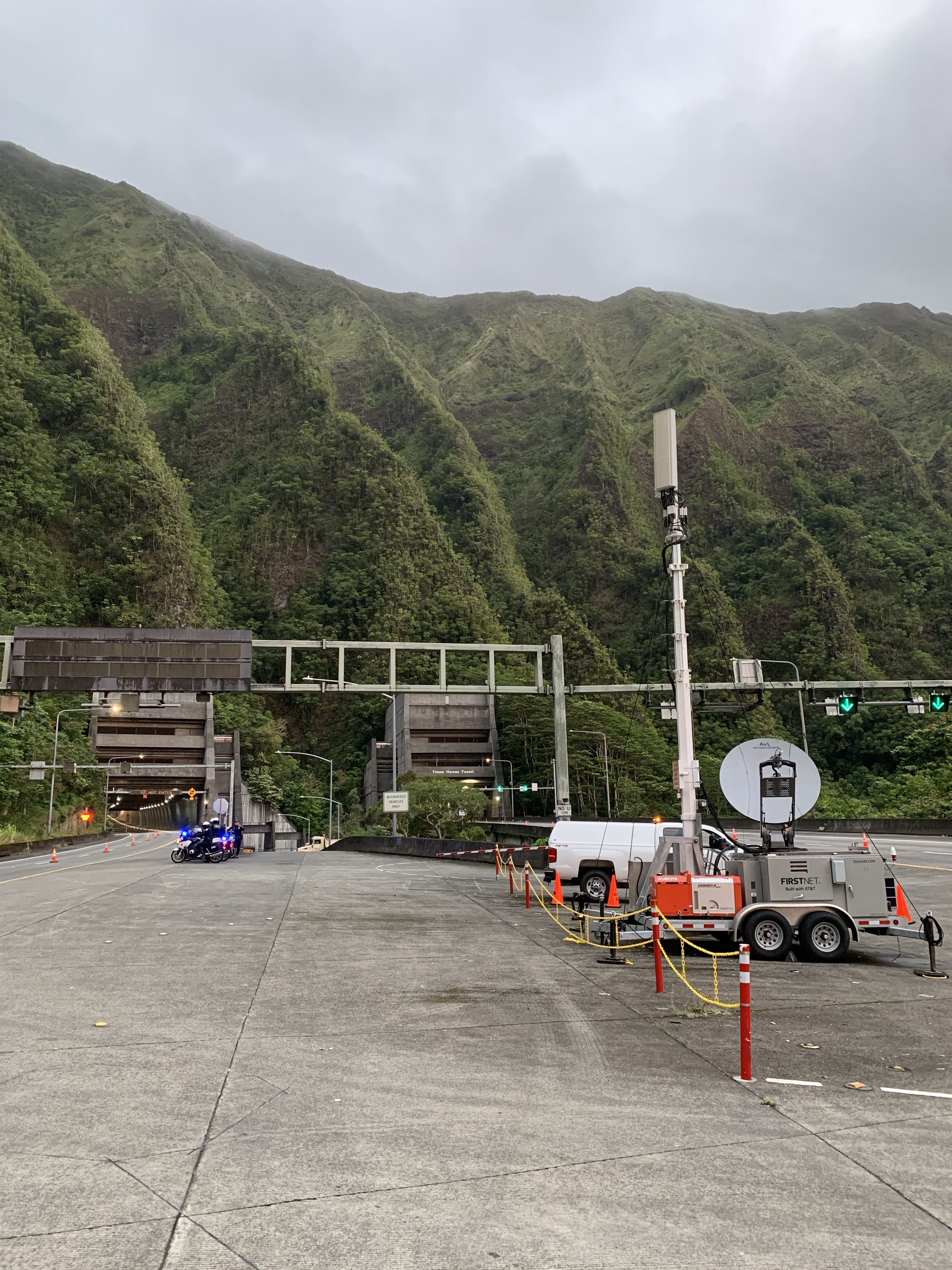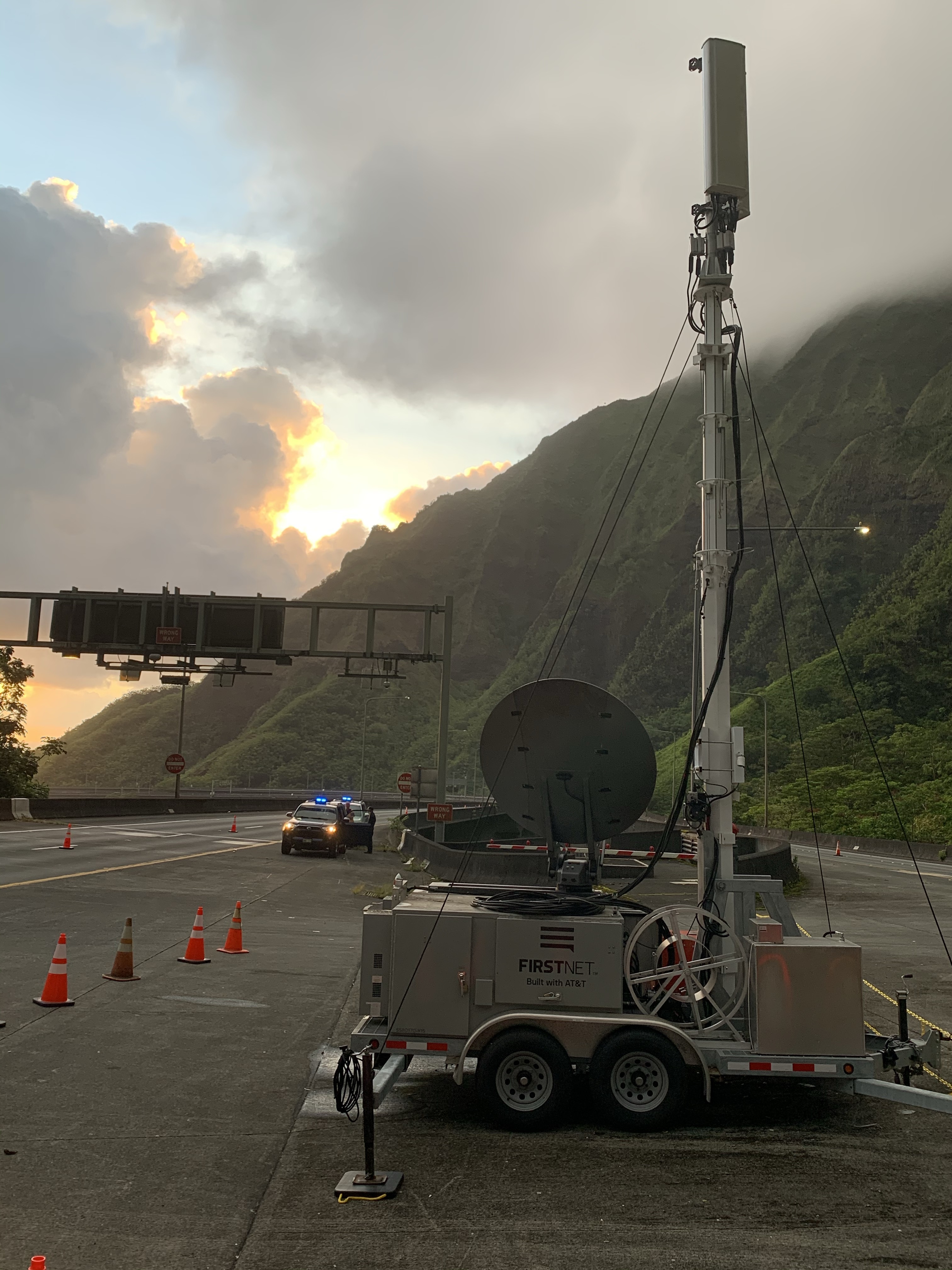It’s been 6 months. Six months since news headlines like, Coronavirus Costs to Businesses and Workers: ‘It Has All Gone to Hell’ first appeared. It’s been 6 months since we entered this “next normal,” irrevocably altering the engines of commerce and the rhythms of our daily lives.
Yet, through these hectic, anxiety-ridden early days and even fast-forwarding to today's video-based collaboration-filled world of virtual learning and socially distant activities, one element of daily life persists - keeping connected to what matters to you most. And the work we do at AT&T is critical to millions of people, businesses and first responders. Here's how we did it, and how we'll keep doing it.
Connecting People
We have sustained experience and responsibilities like few other companies during the coronavirus pandemic. You don’t design a network for a pandemic per se. But it turns out that investing more than $135 billion over the past 5 years1 to build a robust network with self-healing architectures and open standards can help ready it for just about anything. Today, we’re continuing to see high demand for more connectivity-based services and our network is performing well. We’re carrying more data than ever before. In fact, the AT&T Global Network carries more than 391.8 petabytes of data traffic on an average day. That’s up nearly 20% compared to pre-pandemic figures. And we expect continued growth with the (virtual) school year in full swing and proliferated telework environments across the country.

We're seeing more than just a big jump in data consumption too. As work and school locations have switched from the office and classroom setting to the kitchen table, our voice and wireline network traffic has increased while our mobility data traffic is now more distributed:
- Text – Customers have set a record for text messages during the pandemic 2 times. During the March spring break timeframe and on Easter weekend, people sent more than 23,000 texts/second across the AT&T Network. The previous peak (pre-pandemic) was 15,000 texts/second.
- Voice – Wireless voice usage has soared, with a nearly 40% increase, as people began to work from home and use their mobile devices to attend meetings and connect with colleagues.
- Data – Mobile data volume has slightly decreased during COVID-19 since people are able to connect to their home Wi-Fi throughout the day.
Connecting Businesses
The impacts of COVID-19 have been real and tangible for more than just the families and employees socially distancing worldwide. Businesses large, medium and small have turned to us for a wide range of solutions, from wireless connectivity to VPN to cloud services. Today, those services are literally enabling many of them to continue operating in a work-from-home world, as well as in a highly dynamic market environment that requires agility and flexibility at all times.
Even as businesses around the globe begin to reopen their doors, the future of many small businesses remains uncertain. Local cafés, corner shops, boutiques and other small businesses are the cornerstones of our communities, with many of them at a tipping point needing even more help to move forward. That’s why among numerous initiatives, we’re also working with Barbara Corcoran, founder of The Corcoran Group and ‘Shark’ on ABC’s Shark Tank, to empower them with the tools and insights to recover successfully.
Connecting First Responders
EMS, firefighters, police, healthcare professionals, military personnel… they’re all on the front lines in the fight against COVID-19. And they need fast, reliable, around-the-clock connectivity to coordinate and communicate their emergency response. From the beginning of the pandemic, FirstNet – the only nationwide, high-speed broadband communications platform dedicated to and purpose-built for America’s first responders and the extended public safety community – has been helping those on the front line effectively coordinate and communicate.
As public safety’s partner, we were there in January supporting the first quarantine sites and we’re continuing to provide support every step of the way. And the coronavirus is exactly what public safety designed FirstNet for. Last Friday marked the 19th anniversary of the Sept. 11 terrorist attacks. 9/11 changed the world as we knew it. Lives were lost, major economic and societal impacts struck the nation, and first responders’ inability to talk with one another in an emergency was exposed. This is what led to the creation of FirstNet – public safety’s network.
With more than 1.5 million connections2 on FirstNet, we’re seeing first responders consume more than twice as much data as general consumers, reinforcing the need and importance of having a network purpose-built for public safety. And thanks to unique benefits like dedicated connectivity when needed, always-on priority and preemption and high-quality Band 14 spectrum – making FirstNet faster than any commercial network3 – public safety’s network is hitting the mark. So even when business and consumer traffic is surging, first responder communications are protected – a vital difference between FirstNet and commercial networks.
And with the dedicated fleet of portable cell sites, FirstNet is there for public safety no matter where their mission takes them. So far this year, agencies nationwide have made 450+ requests for deployable network assets to support planned and emergency events, covering everything from drive-thru COVID-19 testing sites, hurricanes and the ongoing dangerous Pacific Northwest wildfires. These are just a few of the ways FirstNet has proven to be nimble, adaptable and scalable for even situations as severe as COVID-19.
Connecting for the Future
This only begins to scratch the surface at how we are adapting and innovating to keep the millions of people, communities, organizations and companies around the world connected. We have several Artificial Intelligence (AI) capabilities within our network that helped us manage data during this crisis and provide reliable connectivity to customers. We’re also continuing to expand our nationwide 5G network and the FirstNet network, where we’ve surpassed 80% of our nationwide Band 14 coverage target – well ahead of schedule.
As thousands of our employees made their own transition to working from home or took on new responsibilities supporting our customers on the front line during the pandemic, they never wavered. Their commitment to connecting our customers has been inspirational. According to a recent Gallup survey, more than 60% of Americans have been able to work from home during the COVID-19 pandemic thanks to high-speed internet connections. But that isn’t good enough. Our goal now is to connect every American, as the pandemic has made clear we must close the digital divide. We can’t do it alone. But as we continue in our “next normal,” perhaps together we can – finally – create connections for all.
1Figure includes capital investments, and acquisition of wireless spectrum and operations.
2Figure as of 2Q 2020.
3Based on AT&T analysis of Ookla® Speedtest Intelligence® data median download speeds for Q2 2020. Ookla trademarks used under license and reprinted with permission.
FirstNet® and the FirstNet logo are registered trademarks and service marks of the First Responder Network Authority. All other marks are the property of their respective owners.




